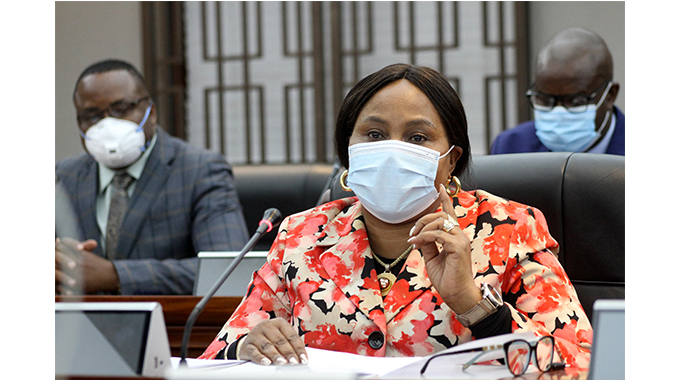COMMENT: Rejection of foreign domination embodied

Standing strong atop a four-legged metal platform in central Harare, she dominates her environment.
She stands up there quietly at the intersection of Samora Machel Avenue and Julius Nyerere Way in the capital, just a stone’s throw from where she was murdered by British colonialists for leading the earliest black resistance against the invaders.
Unveiled yesterday by President Mnangagwa, Mbuya Nehanda’s statue is a bold expression of Zimbabweans’ enduring rejection of foreign domination.
Even as she faced her death by hanging on April 27, 1898 as the First Chimurenga/Umvukela raged, she remained unbowed, declaring “Mapfupa angu achamuka,” (My bones shall rise).
They murdered her, along with another resistance leader Sekuru Kaguvi but they didn’t murder the Zimbabwean spirit which endured to rise again on April 28, 1966 when the Second Chimurenga/Umvukela erupted.
Her bones didn’t rise in vain as blacks defeated British colonialists leading to Independence on April 18, 1980.
“The unveiling of the statue of Mbuya Nehanda Nyakasikana is the manifestation of the bold commitment to reconstruct our country’s rich past and history,” said the President yesterday.
“It equally stands as a symbol of unity, identity and inspiration to present and future generations on the importance of unflinching patriotism, loyalty, fortitude and determination to defend and work for our beloved country against any odds.”
He added:
“The culture of resilience ingrained in the people of this country should see us build this country. This monument tells a story from the view point of the heroine of this country who led the people against colonial rule. We shall continue in discussions to bring back her skull which was taken to the United Kingdom along with others.
“My administration deliberately chose this sight to place the statue. It is in these vicinities that she would stop to drink water and rest. She would come to a stream that was close by. After the white men killed her, they buried the stream thinking they had stifled the culture of Zimbabweans. But today, that stream has been reawakened!”
We are proud that the Government is working to immortalise the country’s heroines and heroes, those women and men who put their lives on the line in defence of their land against colonialists. That Mbuya Nehanda’s statue was unveiled yesterday on Africa Day which was marked under the theme “The Arts, culture and heritage: Levers for building the Africa we want” was huge.
As we have said on this space before, we encourage the Government to keep the momentum of honouring other heroes and heroines of this nation from the First Chimurenga/Umvukela to the Second Chimurenga/Umvukela.
Mtshane Khumalo, Lozikeyi Dlodlo, Sekuru Kaguvi, Chaminuka, Mkwati, Chinengundu, Mashayamombe, Mgandani Dlodlo, Chiwashira, Muchecheterwa, Chingaira Makoni and Mapondera deserve their place as do Josiah Magama Tongogara, Alfred Nikita Mangena, Robert Gabriel Mugabe, Joshua Mqabuko Nkomo and Simon Vengesai Muzenda.
Mbuya Nehanda and Queen Lozikeyi Dlodlo are special given the contemporary thinking and practice that tend to marginalise women.
These two women were powerful and widely revered.
They fought side by side with men. Their roles included commanding or giving direction to everyone, including men on how to prosecute the struggle against white colonialism.
Their starring roles tell us that women were at the top of the running of the old African society. Anyone who deserved a place at the top could get it whether they were men or women. Gender was not a factor, just capacity. If Mbuya Nehanda and Queen Lozikeyi Dlodlo led during their time and having to be hanged for that in the case of the former, why can’t capable women of today lead?
It is good that the Government is moving to ensure that women recover their place in society. Just recently, the Government amended the Constitution to extend the life of the women’s quota in the National Assembly to 2033, created space for young women in Parliament and introduced a 30 percent quota system for female councillors. That agenda must be extended to senior governance structures in the public service and private sector.
Mbuya Nehanda stands tall in Harare, yes as a symbol of black resistance against colonialism, but also as a testament of what women have done historically and can do for their country.












Comments